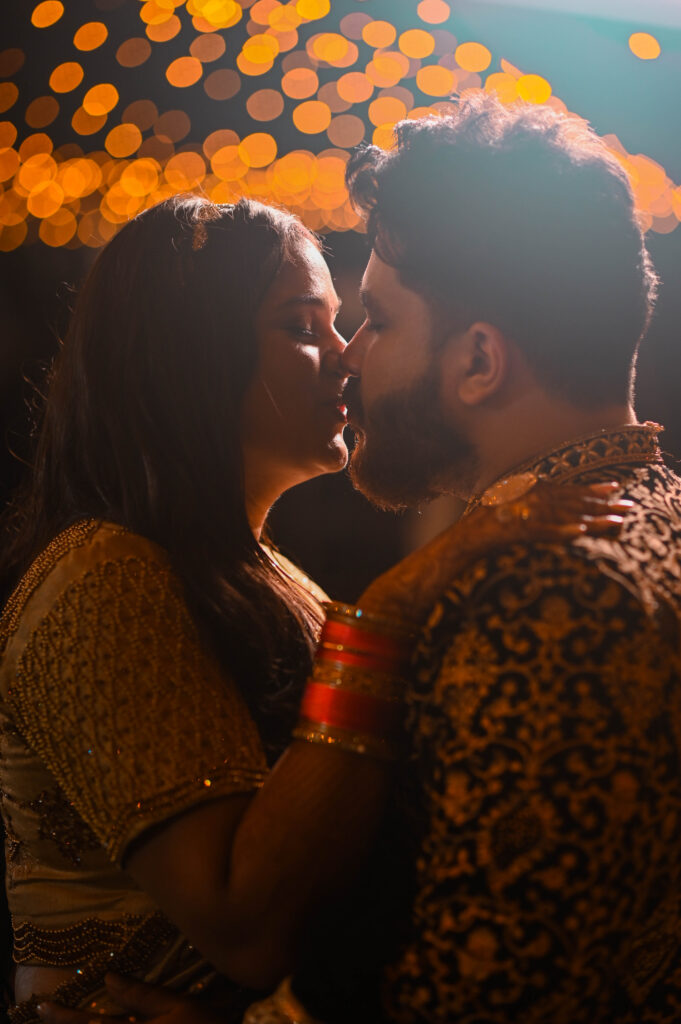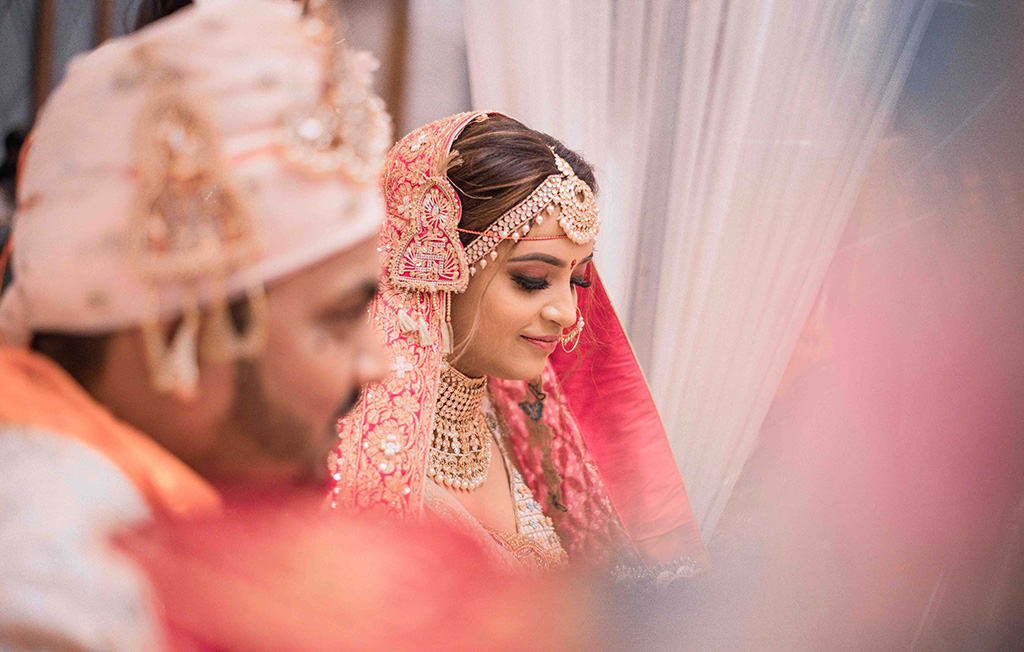Minimalist wedding photography focuses on simplicity and intentionality, stripping away excess to highlight the purest emotions and elements of a couple’s special day. This style embraces the philosophy that “less is more,” creating elegant and timeless images that capture the essence of the event without unnecessary embellishments. In this article, we will explore the concept of minimalist wedding photography its techniques, benefits, and why it resonates with modern couples seeking understated beauty.
Core Principles of Minimalist wedding photography
- Simplicity:
- Stripping away distractions to emphasize the subject.
- Using neutral tones, clean backgrounds, and natural lighting.
- Intentionality:
- Every element in the frame serves a purpose, from the composition to the choice of focus.
- The photographer aims to tell a story through thoughtful and deliberate captures.
- Negative Space:
- Utilizing empty areas in the frame to draw attention to the subject.
- Creates a sense of balance and calmness in the composition.
- Focus on Details:
- Highlighting small but meaningful elements such as a shared glance, a handhold, or the texture of the bride’s gown.
Techniques in Minimalist wedding photography
- Clean Compositions:
- Avoid busy or cluttered backgrounds.
- Use symmetry and balance to create visually pleasing images.
- Natural Light:
- Leveraging soft, natural light to create gentle contrasts and organic tones.
- Avoiding artificial lighting setups that may disrupt the simplicity of the scene.
- Monochrome Palettes:
- Employing black-and-white photography or muted color schemes to evoke timelessness.
- Negative Space:
- Leaving ample space around the subject to emphasize their presence.
- Adds an artistic and airy quality to the images.
- Candid Moments:
- Capturing genuine, unposed interactions between the couple and their loved ones.
- Prioritizing emotions and authenticity over staged shots.

Benefits of Minimalist wedding photography
- Timeless Appeal:
- Minimalist images are less likely to feel dated, offering enduring beauty.
- Enhanced Emotional Impact:
- By removing distractions, the focus remains on the emotions and relationships being documented.
- Artistic Expression:
- Minimalism allows for creative compositions and a refined aesthetic that stands out.
- Stress-Free Experience:
- Couples can enjoy their day without feeling overwhelmed by elaborate setups or constant posing.
- Budget-Friendly:
- Simplicity often translates to fewer props, accessories, and complex arrangements, reducing costs.
Why Couples Choose Minimalist wedding photography
- Reflecting Personal Style:
- Many modern couples value simplicity and want their wedding to reflect their understated elegance.
- Focus on Relationships:
- Minimalist photography emphasizes connections over material elements, resonating with couples who prioritize people and emotions.
- Eco-Friendly Weddings:
- Simpler setups often align with sustainable wedding practices, reducing waste and excess.
- Sophisticated Aesthetic:
- The clean and refined look of minimalist images appeals to those who appreciate high-quality artistry.
Challenges of Minimalist wedding photography
- Skill-Dependent:
- Requires a skilled photographer who can balance simplicity with visual interest.
- Limited Props and Backdrops:
- Minimalism demands creativity to ensure diversity in shots without relying on elaborate setups.
- Perception of Simplicity:
- Some clients may mistake minimalism for lack of effort or detail, requiring clear communication about the artistic approach.
Key Elements to Capture in Minimalist wedding photography
- Emotional Connections:
- Moments of laughter, tears, and love between the couple, their families, and guests.
- Natural Surroundings:
- Incorporating the beauty of the venue, whether it’s a serene outdoor location or an architecturally stunning indoor space.
- Meaningful Details:
- Rings, invitations, florals, or other elements that hold sentimental value.
- Silhouettes and Shadows:
- Using light creatively to produce artistic and impactful images.
How to Plan for a Minimalist wedding photography Experience
- Choose the Right Photographer:
- Look for a photographer whose portfolio reflects minimalist principles.
- Select a Simple Venue:
- Opt for locations with clean lines, natural beauty, or neutral tones.
- Communicate Your Vision:
- Share your preferences and ideas with the photographer to ensure alignment.
- Prioritize Natural Light:
- Plan the schedule to take advantage of soft, natural lighting conditions.
- Focus on Meaningful Decor:
- Use decor sparingly, emphasizing quality over quantity.
The Future of Minimalist wedding photography
As trends shift towards sustainability and intentional living, minimalist wedding photography is likely to grow in popularity. Its ability to capture authentic moments while reflecting the couple’s values ensures its enduring appeal. Advances in technology and editing software will also enhance the creative possibilities within this style, further solidifying its place in the wedding photography landscape.
Key Elements of wedding photography
- Capturing Emotions: wedding photography captures the authentic emotions of the day, from the bride’s tears of joy to the groom’s expressions of happiness. These photos tell a story of love, connection, and celebration.
- Preserving Details: From the intricate designs of the wedding dress and decor to the exchange of rings, photography ensures every small detail is documented.
- Celebrating Relationships: Wedding photography captures the bonds between family members, friends, and the couple. Group shots and candid moments reflect the joy shared by all attendees.
- Creating a Legacy: Wedding photographs become heirlooms, passed down through generations, allowing families to reflect on their history and heritage.
The Role of wedding photography
wedding photography are responsible for more than just taking pictures. They must have technical expertise, creative vision, and the ability to connect with people. Their role includes:
- Planning and Preparation: Discussing with the couple their expectations and preferences, scouting the venue, and understanding the wedding schedule.
- Technical Skills: Using appropriate equipment and techniques to handle various lighting conditions, compositions, and settings.
- Post-Processing: Editing photos to enhance their quality and artistic appeal, ensuring the final collection meets the couple’s expectations.
Importance of wedding photography
- Timeless Memories: Wedding photography immortalizes moments that are fleeting, ensuring that even the smallest gestures are preserved.
- Emotional Resonance: Photos evoke nostalgia and allow couples to relive their special day repeatedly.
- Cultural Significance: In many cultures, wedding photos are an essential part of the event, reflecting traditions, customs, and values.

Styles of wedding photography
Wedding photography varies based on the style chosen by the couple. Popular styles include:
- Traditional: Focused on posed and formal shots.
- Photojournalistic: Captures candid, unscripted moments.
- Fine Art: Artistic and creative compositions.
- Contemporary: Modern and stylish, inspired by fashion.
- Vintage: Nostalgic and timeless aesthetic.
Why wedding photography is Essential
- Preserving Special Moments: A wedding day is filled with fleeting moments—exchanging vows, the first kiss, or a heartfelt toast. Wedding photography ensures these moments are captured forever.
- Documenting Details: Every wedding is unique, with intricate decorations, personalized themes, and meaningful traditions. Photography captures these details, preserving the hard work and creativity of the day.
- Emotional Connection: Wedding photos evoke deep emotions, allowing couples to relive the joy, laughter, and love of their special day.
- Family Heirloom: Wedding photos often become treasured family heirlooms, passed down through generations, connecting families to their heritage.
- Telling a Story: Through a blend of posed and candid shots, wedding photography narrates the couple’s love story and the essence of the celebration.
The Role of a wedding photography
A wedding photography plays a crucial role in ensuring the success of this preservation process. They must:
- Understand the Couple’s Vision: Collaborate with the couple to capture their desired style and important moments.
- Adapt to Challenges: Handle various lighting conditions, weather changes, and unpredictable events with ease.
- Provide Artistic Value: Create visually stunning and emotionally impactful photos through composition, lighting, and editing.
Styles of wedding photography
Couples can choose from various styles to suit their preferences:
- Traditional: Focuses on formal, posed portraits and significant moments.
- Photojournalistic: Captures natural, candid moments to tell an authentic story.
- Fine Art: Emphasizes creativity and aesthetic beauty.
- Contemporary: Incorporates modern, stylish elements.
- Drone Photography: Provides breathtaking aerial views of the venue and event.
The Long-Term Importance
wedding photography is not just about the present; its value grows with time. It allows couples to reflect on their journey and share their memories with future generations. As trends and technology evolve, the timeless nature of a well-captured wedding photo remains constant, making it a cornerstone of any wedding celebration.
In conclusion, wedding photography is a vital part of commemorating love, connection, and the joy of a wedding day. It is an investment in memories that last a lifetime, offering a beautiful reminder of the bonds shared and the start of a new chapter.
Common Causes of Disappointment in wedding photography
Understanding the root causes of disappointment can help couples and wedding photography prevent issues. Some common reasons include:
- Miscommunication
- A lack of clear communication about the desired style, key moments, or specific requests can result in unmet expectations.
- Inexperience
- Hiring an inexperienced photographer can lead to poor-quality images, missed moments, or technical errors.
- Technical Failures
- Equipment malfunctions, inadequate lighting, or improper camera settings can compromise the quality of photos.
- Unrealistic Expectations
- Expecting every shot to look like a professionally edited magazine cover can lead to disappointment when the final product reflects real-life imperfections.
- Time Constraints
- Tight schedules or delays in the wedding timeline can limit the photographer’s ability to capture all desired moments.
- Environmental Challenges
- Unpredictable weather, poor lighting conditions, or crowded venues can impact the quality of photos.
Strategies to Minimize Disappointment
To reduce the risk of disappointment in wedding photography, both couples and photographers can adopt proactive measures:
For Couples wedding photography
- Conduct Thorough Research
- Review portfolios, check reviews, and meet with potential photographers to ensure their style aligns with your vision.
- Set Clear Expectations
- Provide a detailed list of must-have shots and discuss your preferences for style, mood, and editing.
- Discuss Backup Plans
- Ensure the photographer has contingency plans for equipment failure or unforeseen circumstances.
- Allocate Adequate Time
- Build flexibility into the schedule to allow the photographer sufficient time to capture key moments.
- Review Contracts Carefully
- Understand the terms of the agreement, including delivery timelines, editing processes, and refund policies.
For wedding photography
- Communicate Effectively
- Take the time to understand the couple’s vision and provide realistic expectations about what can be achieved.
- Prepare Thoroughly
- Visit the venue beforehand, test equipment, and have backups ready for critical components.
- Offer Previews
- Sharing a few edited images shortly after the wedding can reassure couples while they wait for the complete album.
- Seek Feedback
- Encourage honest feedback to identify areas for improvement and build stronger client relationships.
- Continuously Improve Skills
- Invest in ongoing education, workshops, and practice to stay updated on the latest techniques and trends.
While disappointment is often perceived negatively, it can have constructive outcomes. Here are some positive aspects of addressing the risk of disappointment:
- Encourages Better Communication
- When couples are aware of the potential for disappointment, they are more likely to engage in detailed discussions with photographers. This fosters a mutual understanding of style preferences, key moments to capture, and any specific requirements.
- For example, a couple might express their desire for candid moments over traditional posed shots, ensuring the photographer aligns with their vision.
- Promotes Professional Growth
- For photographers, feedback on missed expectations provides an opportunity to learn and improve their craft. Constructive criticism can lead to refining techniques, better client interactions, and overall growth in their profession.
- Increases Awareness of Style Differences
- Highlighting the risk of disappointment encourages couples to research different photography styles. This exploration often leads to a better understanding of what resonates with them, whether it’s photojournalism, fine art, or traditional portraiture.
- Stimulates Realistic Expectations
- Awareness of potential risks helps couples set realistic expectations. Instead of expecting a magazine-style perfection in every frame, they might focus on the authenticity of emotions and the essence of the day.
- Encourages Backup Plans
- The fear of disappointment often leads to proactive measures, such as hiring a second photographer, ensuring proper lighting setups, or confirming equipment redundancy. These steps can significantly reduce the chances of failure.
Conclusion wedding photography
Minimalist wedding photography is a celebration of simplicity and elegance. By focusing on the essential elements of love, connection, and beauty, it creates timeless images that resonate deeply with couples. Its emphasis on authenticity and artistry makes it a perfect choice for modern weddings, ensuring that the memories captured are both meaningful and visually stunning. As couples continue to seek intentional and sustainable options, minimalist wedding photography stands out as a powerful way to document their love story.
The risk of disappointment in wedding photography is a double-edged sword. While it underscores the high expectations and emotional investment in preserving wedding memories, it also highlights the importance of communication, preparation, and professionalism. By addressing potential pitfalls proactively, couples and wedding photography can work together to create a positive experience and ensure that the final photos become cherished mementos of a joyous occasion.
What Is Minimalist wedding photography?
Minimalist wedding photography is an approach that prioritizes clean compositions, negative space, and subtle details. It avoids overly dramatic setups or cluttered backgrounds, instead focusing on the subjects and their authentic interactions. By simplifying the visual narrative, minimalist photography allows the emotions and beauty of the moment to shine through.















